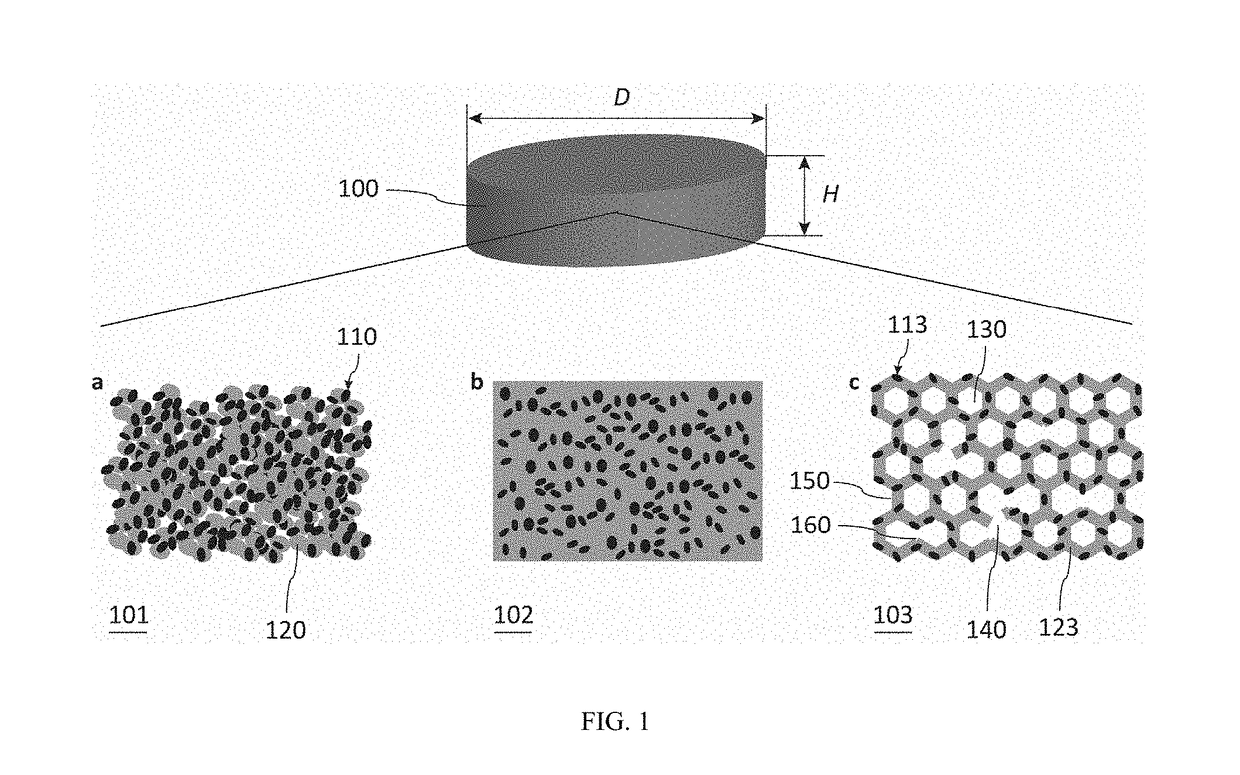Fibrous dosage form
a technology of fibrous and fibroblasts, applied in the direction of additive manufacturing with liquids, organic active ingredients, additive manufacturing processes, etc., can solve the problems of difficult prediction of microstructural details and manufacture of granular dosage forms, hampered mixing of drug and excipient particles, and complicated dispensing and compacting of particulates
- Summary
- Abstract
- Description
- Claims
- Application Information
AI Technical Summary
Benefits of technology
Problems solved by technology
Method used
Image
Examples
experimental examples
[0188]The following examples set forth, in detail, ways by which the fibrous dosage forms may be prepared and analyzed, and will enable one of skill in the art to more readily understand the principle thereof. The following examples are presented by way of illustration and are not meant to be limiting in any way.
example 1
Preparation of Melt-Processed Dosage Forms
[0189]Melt-processed dosage forms were prepared by first mixing 40 wt % of solid Acetaminophen particles (particle size about 40-80 μm as received from Sigma, St. Louis) with 60 wt % granules of polyethylene glycol with a molecular weight of 35,000 g / mol (PEG 35k, as received from Sigma, St. Louis). The solid mixture was then loaded into the granule-feeding unit of an adapted extrusion-micropatterning machine as shown schematically in FIG. 16. The granule-feeding unit was set to deliver 1.7 mg / s of the drug and excipient material into the extruder barrel of the adapted extrusion-micropatterning machine. The rotation rate of the extruder screw was about 3-5 rpm and the temperatures of the extruder barrel and nozzle were set to 80° C.
[0190]Melt-processed fibrous dosage forms were then micro-patterned as follows. A single-layer pattern of the fibrous effluent from the extruder nozzle was first deposited on a surface (also referred to herein as ...
example 2
Preparation of Wet-Processed Dosage Forms
[0193]Wet-processed dosage forms were prepared by first mixing 60 wt % of solid ibuprofen particles (particle size about 20-40 μm, as received from BASF, Ludwigshafen, Germany) with 40 wt % particles of polyvinyl alcohol-polyethylene glycol graft copolymer 3:1 with a molecular weight of 45,000 Daltons (particle size about 50 μm, as received from BASF, Ludwigshafen, Germany; tradename: Kollicoat IR). The particles were mixed and loaded into the granule-feeding unit of an adapted extrusion-micropatterning machine as shown schematically in FIG. 16. The granule-feeding unit was set to deliver 1.7 mg / s (of the drug-excipient material) into the extruder barrel of the adapted extrusion-micropatterning machine. The liquid-feeding unit (e.g., the solvent-feeding unit) of the extrusion-micropatterning machine was filled with deionized water and set to deliver a water flow rate of 1.1 μl / s into the extruder barrel. The rotation rate of the extrusion scr...
PUM
| Property | Measurement | Unit |
|---|---|---|
| thickness | aaaaa | aaaaa |
| percolation time | aaaaa | aaaaa |
| contact width | aaaaa | aaaaa |
Abstract
Description
Claims
Application Information
 Login to View More
Login to View More - R&D
- Intellectual Property
- Life Sciences
- Materials
- Tech Scout
- Unparalleled Data Quality
- Higher Quality Content
- 60% Fewer Hallucinations
Browse by: Latest US Patents, China's latest patents, Technical Efficacy Thesaurus, Application Domain, Technology Topic, Popular Technical Reports.
© 2025 PatSnap. All rights reserved.Legal|Privacy policy|Modern Slavery Act Transparency Statement|Sitemap|About US| Contact US: help@patsnap.com



